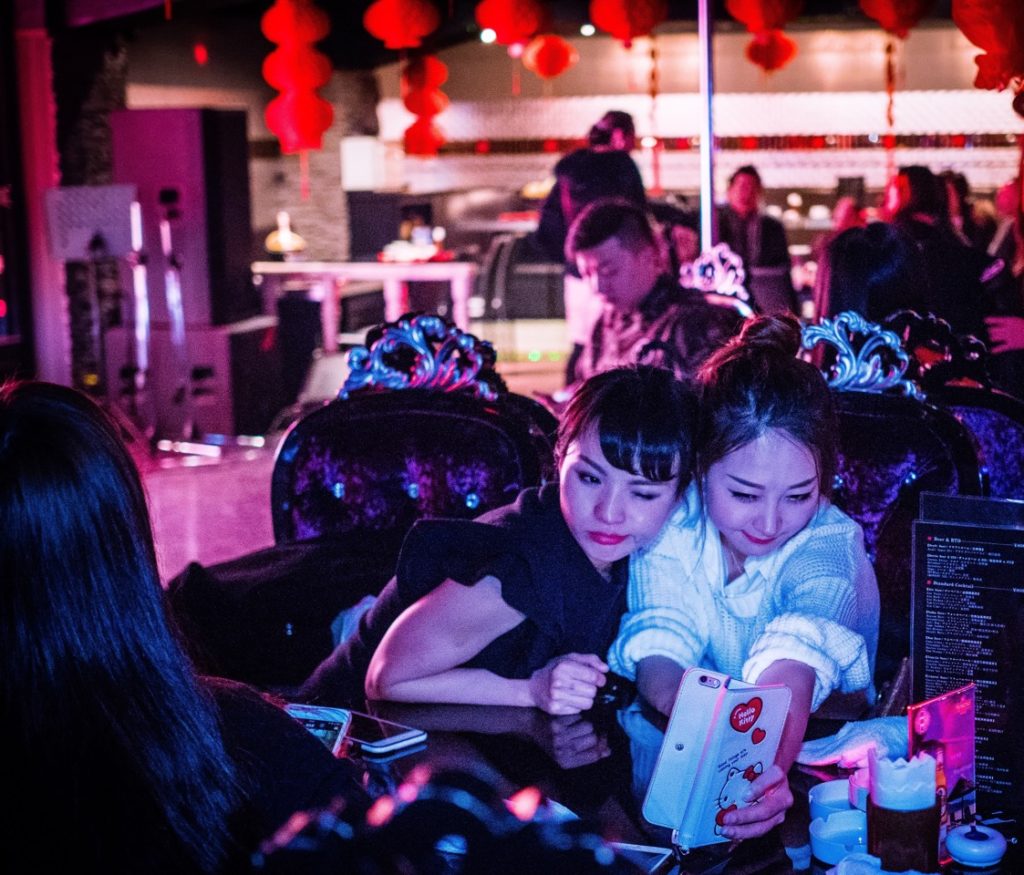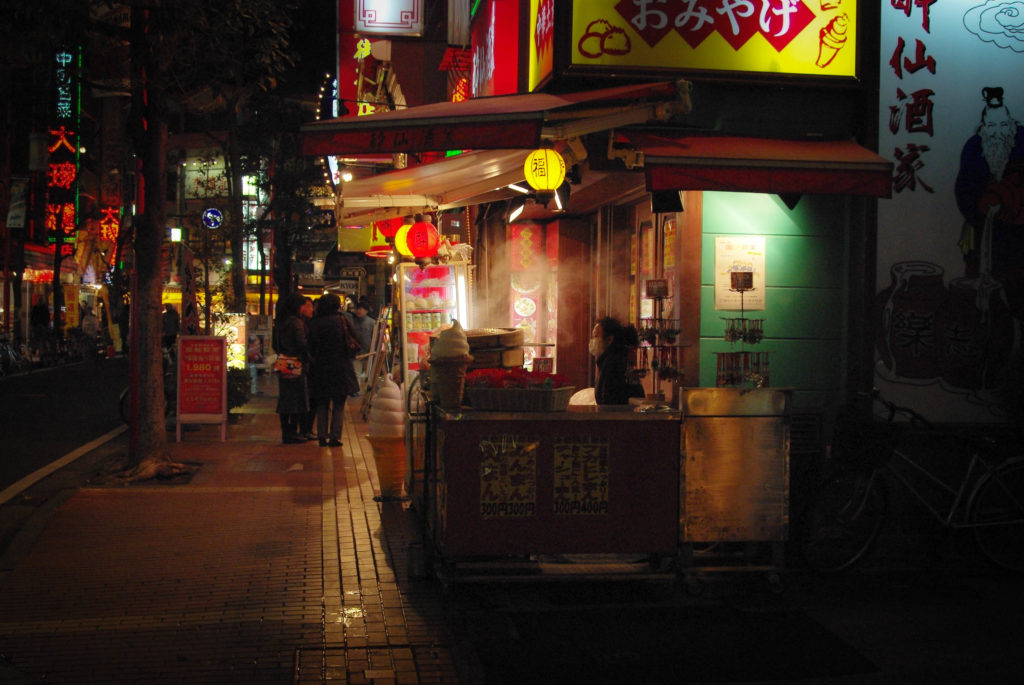Jamie Coates
Editors’ Note: This article is part of the series Digital Anthropologies in East Asia.
In 2008 a small group of Chinese business owners gathered together to propose the official declaration of a new Chinatown in Tokyo. Ikebukuro, the second busiest station in the Northwestern corner of Tokyo’s central loop-line, had attracted growing numbers of Chinese students and entrepreneurs in the preceding decades, and in the eyes of some had already become a Chinatown of sorts. The proposal was touted as a means of rebranding already existing networks of Chinese businesses in the area, hoping to mirror the success of historic Chinatowns in Japan, such as in Yokohama and Kobe. Ikebukuro’s Chinatown designation was intended to represent the new overseas Chinese community in Japan. Migrants from the People’s Republic of China grew to become the largest non-Japanese minority in Japan in 2006, and are mostly made up of those who followed education-oriented pathways into the country after 1985. From student-workers and trainees, the earlier generation of this migrant group have since established themselves as independent business-owners and/or employees in Japanese companies and public institutions. The majority however, are relatively young with fluid identities, diverse interests, and quickly changing ambitions.
The northern corner of Ikebukuro hosts over 300 Chinese-owned businesses and its municipal district (Toshima ward) is home to more than 13,000 Chinese nationals. More significantly, the station connects to many wider networks of Chinese sociality in the city. The official government response to the Chinatown proposal was that the Chinese community was too new, and too disengaged from local Japanese organizational activities to warrant official recognition. The phrase ‘let’s start from a dialogue’ (mazu kōryu kara) was repeated in various media reports at the time, exemplar of the polite yet distinctly conclusive way Japanese institutions reject these sorts of proposal. Unable to gain official approval, several of the initial proponents of the Chinatown proposal side-stepped Japanese stakeholders by producing a ‘Tokyo Chinatown’ website that links to various social media. In turn, Ikebukuro’s unofficial Chinatown status has been supported by some Japanese scholars and activists, serving as a symbol of new urban diversity in Japan.
From these accounts one might assume that the Chinatown proposal reflects a newly forming Chinese community in Ikebukuro, as well as its tense relationship with local Japanese officials. However, the growth in digital forms of sociality and their intersection with new mobilities has ensured that many Chinese community-forming practices in Tokyo have taken on less territory oriented dynamics. Based on fieldwork in Ikebukuro, the Chinatown proposal by no means reflected the patterns of sociality and identification among the majority of ethnic Chinese in Tokyo, nor Ikebukuro. In fact, the Chinatown’s rejection was met with sighs of relief among many of Ikebukuro’s circles, with people stating that Chinatowns are an older form of sociality no longer fitting the way Tokyo’s relatively new Chinese population want to live their lives.
One young woman from Shijiazhuang told me that Chinatowns do not reflect how her peers imagine places such as Ikebukuro. She continued, stating the Chinatown and its accompanying website and ideals, for instance, were ‘dead’ (si). In contrast, the intersection of smartphones and social media has ensured that Chinese sociality intersects with wider patterns of otherness in Tokyo. One young man from Nanjing, for instance, even jokingly said to me ‘Tokyo’s Chinatown is online (wangshang)’. While Tokyo’s Chinatown may be ‘online’, it does not follow patterns of strict co-ethnic identification, nor was it disconnected from analogue spaces in the city. Rather than connecting to a single ethnic enclave, digital Chinese sociality in Tokyo connects multiple Sinophone social media platforms to a heterotopic spread of bars, restaurants, social clubs, churches, schools, and various other spaces tucked away within the urban spread of the city. Some of these spaces were clustered around major stations such as Ikebukuro, Shinjuku and Ueno, but this was not always the case. Moreover, this kind of spatial arrangement suggested less about Chinese social life in the city than it did the ways the relationship between digital and analogue life intersects with Tokyo’s already heterotopic qualities.
The choice of platform in negotiating these many connections and places reflects the differing scaling effects of digital sociality. These scales cut across extant associations between ethnicity and place in Tokyo, following logics of conviviality and practice more so than ethnic identification. At the same time, the conviviality of shared meanings, particularly in terms of joking, ensured that certain social media platforms had aggregating effects. WeChat, for example, was decidedly Sinophone, whereas platforms such as Facebook and Twitter (which are technically banned in mainland China), were used to navigate multi-lingual networks of practice in Tokyo, such as fan groups, artist collectives and nightlife based friendships. Private WeChat groups such as one titled ‘the mental asylum’, which I followed during fieldwork from 2014-2016 were born out of chance encounters in bars across Tokyo, and became a site for the circulation of private images that parody Chinese pop culture, as well as complex Sinophone language games. Others, such as a group of Chinese-speaking artists, musicians and documentarians formed out of shared interests and eventually became an inclusive space for Chinese-speaking people from around the world, including me. These groups were spaces of constant chatter, and frequently turned into face-to-face meetings throughout the city to sing karaoke and eat Chinese food.
Chinatowns in Japan, much like in other parts of the world, have stood as a curious means of territorializing ethnic groups in the city. Yokohama’s Chinatown emerged out of legal restrictions on the occupations and spaces Chinese workers could enter in the late nineteenth and early twentieth century. From the 1980s it was refurbished and reinvented to become a place where ethnic Others were celebrated as consumable and desirable. However, the new Chinatowns of Tokyo appear to differ. From the legal, to the cultural and political, the spatial dynamics of Chineseness and otherness in Japanese cities has taken on new patterns in recent years. Enabled by digitalized sociality, the young Chinese population in Tokyo reflects a diversity that is nowhere but everywhere, aggregated in terms of practice and shared interest, and resistant to the demarcation of ethnic enclaves, such as those embodied in the term ‘Chinatown’.
Jamie Coates works on Sino-Japanese mobilities and their effect on young Chinese identities. In particular, he is interested in how migration, media, and play shape young Chinese efforts to re-imagine co-ethnic and regional ideas of commonality. He is currently a visiting fellow at Sophia University.


